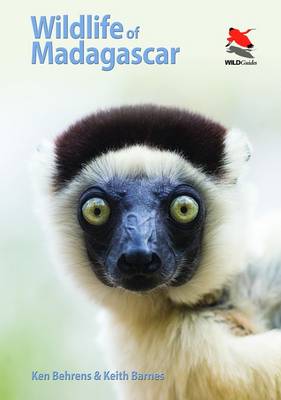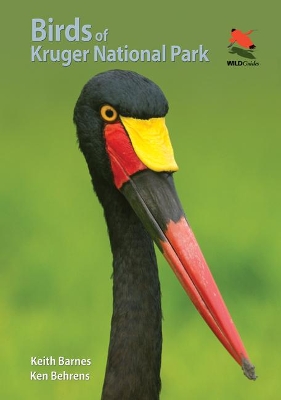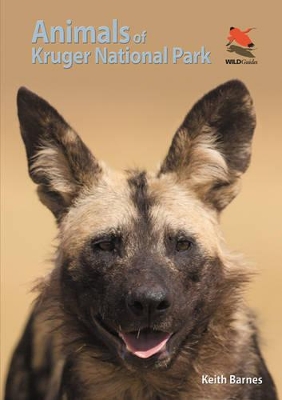WILDGuides
3 total works
The Indian Ocean island of Madagascar is one of the world's great natural treasures and ecotourism destinations. Despite being an island, it is home to nearly an entire continent's variety of species, from the famous lemurs to a profusion of bizarre and beautiful birds, reptiles and amphibians. Wildlife of Madagascar is a compact and beautifully illustrated photographic guide, and an essential companion for any visitor or resident. With an eye-catching design, authoritative and accessible text and easy-to-use format, it provides information on identification, distribution, habitat, behaviour, biology and conservation for all the mammals, birds, reptiles, amphibians and butterflies likely to be seen. * The most comprehensive single-volume field guide to Madagascar's wildlife * Attractive layout features more than 900 stunning colour photographs * Covers the mammals, birds, reptiles, amphibians and butterflies, and some of the other invertebrates and plants, most likely to be seen * Provides key information about identification, distribution, habitat, behaviour and conservation * Introductory sections provide background information on Madagascar and its unique environments
South Africa's Kruger National Park is one of the largest and most iconic conservation areas in Africa. Habitats range from wide-open savannah and rugged thornveld to broadleaved mopani woodland. This microhabitat variation gives Kruger a phenomenal diversity of some 520 bird species, half of which are resident. From Africa's most extraordinary eagles, like the scarlet-faced Bateleur, to electric-colored glossy-starlings and jewel-like finches, Kruger offers an avian celebration of form and color. It is also a crucial conservation area, supporting South Africa's largest viable populations of vultures, eagles, and large terrestrial birds. This field guide offers a unique window into the world of Kruger's birds. More than 500 stunning color photographs illustrate the 259 most frequently encountered species, and a habitat-based approach assists in identification. The authoritative text provides key information about identification, habitat, behavior, biology, and conservation. The guide contains information likely to be new to even the most experienced birders, but is written in a nontechnical style that makes it accessible to anyone.
* An essential guide to Kruger's birds* Perfect for new and experienced birders alike* Small, portable format ideal for field use* Unique attractive layout with more than 500 stunning color photographs* Covers the 259 most frequently seen species* Uses a habitat-based approach to aid identification* Authoritative and accessible text provides key information about identification, behavior, biology, and conservation Distributed by Princeton University Press
* An essential guide to Kruger's birds* Perfect for new and experienced birders alike* Small, portable format ideal for field use* Unique attractive layout with more than 500 stunning color photographs* Covers the 259 most frequently seen species* Uses a habitat-based approach to aid identification* Authoritative and accessible text provides key information about identification, behavior, biology, and conservation Distributed by Princeton University Press
South Africa's Kruger National Park is one of the largest and most diverse conservation areas in Africa, and a hugely popular visitor attraction. Animals of Kruger National Park is a compact and beautifully illustrated guide, and the essential companion for any safari to the region. With an eye-catching design, authoritative and accessible text and easy-to-use format, this detailed photographic guide provides information on identification, habitat, behaviour, biology and conservation for all the mammals, reptiles and frogs likely to be seen. Introductory sections provide background information on the park and its habitats, when to visit and where to go, and other practical considerations that will help to enhance your understanding, appreciation and enjoyment of the animals of this incredible region.
* The essential all-in-one Kruger safari companion, ideal for all visitors * Unique and attractive layout, featuring 216 stunning colour photographs, 116 track (spoor) illustrations and two maps * Covers 57 mammals, 17 reptiles and eight frogs * Features the 'Big 5'--elephants, leopards, lions, rhinoceroses and buffalos--as well as other iconic and charismatic animals * Provides key information on identification, behaviour, biology and conservation
* The essential all-in-one Kruger safari companion, ideal for all visitors * Unique and attractive layout, featuring 216 stunning colour photographs, 116 track (spoor) illustrations and two maps * Covers 57 mammals, 17 reptiles and eight frogs * Features the 'Big 5'--elephants, leopards, lions, rhinoceroses and buffalos--as well as other iconic and charismatic animals * Provides key information on identification, behaviour, biology and conservation


